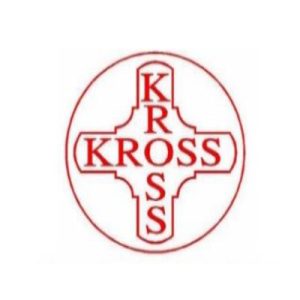
Kross Limited IPO
ClosedAlready have an account? Apply now
Kross Limited IPO details
Schedule of Kross Limited
| Issue open date | 09 Sep 2024 |
| Issue close date | 11 Sep 2024 |
| UPI mandate deadline | 11 Sep 2024 (5 PM) |
| Allotment finalization | 12 Sep 2024 |
| Refund initiation | 13 Sep 2024 |
| Share credit | 13 Sep 2024 |
| Listing date | 16 Sep 2024 |
| Mandate end date | 26 Sep 2024 |
| Lock-in end date for anchor investors (50%) | 12 Oct 2024 |
| Lock-in end date for anchor investors (remaining) | 11 Dec 2024 |
Note: The schedule is tentative. The anchor lock-in period ends 30 days after the actual allotment date for 50% of the shares and 90 days after for the remaining portion. The allotment status can be checked on the registrar's website and the exchange website.
About Kross Limited
Established in 1991, Kross Limited manufactures and supplies trailer axle and suspension assembly and a wide range of forged and precision machined high-performance safety critical parts for medium and heavy commercial vehicles (M&HCV) and farm equipment segments. The company is a specialist in manufacturing safety critical components for the M&HCV segment which include axle shafts, companion flanges, anti-roll bars and stabilizer bar assembly, suspension linkages, differential spiders, bevel gears, planet carriers, inter-axle kits, rear-end spindles, pole wheels and a wide variety of tractor components for the hydraulic lift arrangement, power take-off (PTO) shafts and front axle spindles. The company’s five manufacturing units in Jamshedpur have a capacity of 60,000 trailer axle and suspension assemblies per annum.
Financials of Kross Limited
Issue size
| Funds Raised in the IPO | Amount |
| Overall | ₹500.00 crores |
| Fresh Issue | ₹250.00 crores |
| Offer for sale | ₹250.00 crores |
Utilisation of proceeds
| Purpose | INR crores (%) |
| Capital expenditure | 70 (28%) |
| Debt reduction | 90 (36%) |
| Working capital requirements | 30 (12%) |
| General corporate purposes | 60 (24%) |
Strengths
- In over three decades of its operations, The company has established long-standing relationships with several well-established Indian and global customers like Ashok Leyland, Tata International DLT, and other marquee domestic and global OEMs in the M&HCV segment.
- The company has a strong track record of sustained growth and robust financial performance in the last three financial years.
- The company’s five manufacturing facilities in Jamshedpur have obtained ISO 9001:2015 for the manufacture of the axle shaft, PTO shaft, rock shaft, ring gear, hubs, and other ferrous parts from TÜV NORD CERT GmbH and IATF 16949:2016 quality certifications for the manufacture of axle shafts, universal joints, propeller shaft parts, etc.
- The company has a diversified product portfolio with a focus on continuous value addition and has offered a diverse suite of products to over 200 customers across M&HCV and farm equipment segments, domestic dealers, and fabricators for its trailer axle and suspension business in the last three fiscals.
Risks
- The company faces customer concentration risk with its top five customers contributing more than 66% in each of the previous three Fiscal) of its revenues. The loss of a major customer or reduction in demand for its products from any of the major customers may adversely affect the business.
- The company may face end-user industry risk if the demand for its products is linked to growth and trends in sales of vehicles by the company’s customers.
- It does not have firm commitment agreements with its customers. If the customers choose not to source their requirements from the company, there may be a material adverse effect on its business.
- The company may face pricing pressure from its customers which may adversely affect the company’s gross margin, profitability, and ability to increase prices.
- If the company fails to accurately predict the demand for its products or if customers vary or cancel production orders, it may incur costs associated with excess inventory, including raw material charges, elongated working capital cycle, and storage costs.